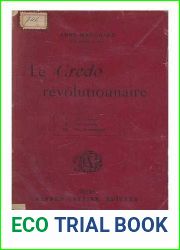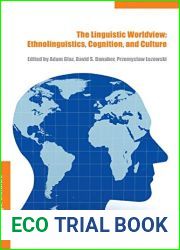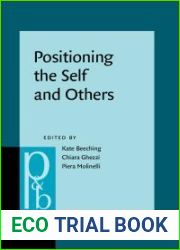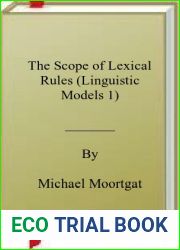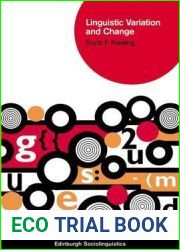
BOOKS - Linguistic Fingerprints: How Language Creates and Reveals Identity

Linguistic Fingerprints: How Language Creates and Reveals Identity
Author: Roger J. Kreuz
Year: August 1, 2023
Format: PDF
File size: PDF 2.2 MB
Language: English

Year: August 1, 2023
Format: PDF
File size: PDF 2.2 MB
Language: English

Linguistic Fingerprints: How Language Creates and Reveals Identity As human beings, we often reveal more about ourselves through our language use than we realize. Our accent, vocabulary, grammar, and even the way we structure our sentences can convey valuable information about our background, education, gender, age, and personality. This is especially true when it comes to written communication, such as emails, texts, and social media posts. However, the question remains - how unique is a person's linguistic identity? Can language be used to identify a specific person, exonerate a murder suspect, or determine who authored a particular book? The answer is yes, and this is where linguistic fingerprinting comes in. Linguistic fingerprinting is a set of techniques used by forensic and computational linguists to analyze language patterns and identify individuals based on their language use. These techniques have been instrumental in solving forensic and literary mysteries, such as catching the Unabomber and unmasking anonymous editors. However, like any technology, there are limitations and potential pitfalls to be aware of. Mistaken linguistic identities and false confessions can occur, highlighting the need for caution and careful analysis.
Лингвистические отпечатки пальцев: как язык создает и раскрывает идентичность Как люди, мы часто раскрываем больше о себе через использование языка, чем мы понимаем. Наш акцент, словарный запас, грамматика и даже то, как мы структурируем наши предложения, могут передать ценную информацию о нашем происхождении, образовании, поле, возрасте и личности. Особенно это касается письменного общения, например, электронных писем, текстов и постов в социальных сетях. Однако остается вопрос - насколько уникальна языковая идентичность человека? Можно ли с помощью языка установить личность конкретного человека, оправдать подозреваемого в убийстве или определить, кто является автором той или иной книги? Ответ - да, и здесь вступает лингвистическая дактилоскопия. Лингвистическая дактилоскопия - это набор техник, используемых криминалистами и компьютерными лингвистами для анализа языковых паттернов и идентификации индивидов на основе их языкового использования. Эти методы сыграли важную роль в разрешении судебных и литературных загадок, таких как поимка Унабомбера и демаскирование анонимных редакторов. Однако, как и любая технология, есть ограничения и потенциальные подводные камни, о которых нужно знать. Могут возникать ошибочные языковые идентичности и ложные признания, что подчеркивает необходимость осторожности и тщательного анализа.
Empreintes linguistiques : comment la langue crée et révèle l'identité En tant qu'êtres humains, nous révélons souvent plus sur nous-mêmes par l'utilisation de la langue que nous ne le comprenons. Notre accent, notre vocabulaire, notre grammaire et même la façon dont nous structurons nos phrases peuvent transmettre des informations précieuses sur nos origines, notre éducation, notre sexe, notre âge et notre personnalité. Cela est particulièrement vrai pour la communication écrite, par exemple les e-mails, les textes et les posts sur les réseaux sociaux. Cependant, la question demeure : à quel point l'identité linguistique d'une personne est-elle unique ? Est-il possible d'identifier une personne en particulier, d'acquitter un suspect de meurtre ou de déterminer qui est l'auteur d'un livre ? La réponse est oui, et c'est là que la dactyloscopie linguistique entre. La dactyloscopie linguistique est un ensemble de techniques utilisées par les scientifiques et les linguistes informatiques pour analyser les profils linguistiques et identifier les individus en fonction de leur utilisation linguistique. Ces méthodes ont joué un rôle important dans la résolution des mystères judiciaires et littéraires, tels que la capture d'Unabomber et la démasquage des éditeurs anonymes. Cependant, comme toute technologie, il y a des limites et des pièges potentiels à connaître. Il peut y avoir des identités linguistiques erronées et de fausses aveux, ce qui souligne la nécessité de faire preuve de prudence et d'une analyse approfondie.
Huellas dactilares lingüísticas: cómo el lenguaje crea y revela identidad Como seres humanos, a menudo revelamos más sobre nosotros mismos a través del uso del lenguaje de lo que entendemos. Nuestro acento, vocabulario, gramática e incluso cómo estructuramos nuestras propuestas pueden transmitir información valiosa sobre nuestros orígenes, educación, campo, edad y personalidad. Esto se aplica especialmente a la comunicación escrita, por ejemplo, correos electrónicos, textos y publicaciones en redes sociales. n embargo, la pregunta sigue siendo: cuán única es la identidad lingüística de una persona? Es posible, mediante el lenguaje, identificar a una persona en particular, absolver a un sospechoso de asesinato o determinar quién es el autor de un libro determinado? La respuesta es sí, y aquí entra la huella dactilar lingüística. La dactiloscopia lingüística es un conjunto de técnicas utilizadas por forenses y lingüistas informáticos para analizar patrones lingüísticos e identificar individuos en función de su uso lingüístico. Estos métodos jugaron un papel importante en la resolución de misterios judiciales y literarios, como la captura de Unabomber y el desenmascaramiento de editores anónimos. n embargo, como cualquier tecnología, hay limitaciones y posibles escollos que deben ser conocidos. Pueden surgir identidades lingüísticas erróneas y confesiones falsas, lo que subraya la necesidad de cautela y análisis exhaustivos.
Impronte digitali linguistiche: come la lingua crea e rivela l'identità Come persone, spesso riveliamo più di noi stessi attraverso l'uso della lingua di quanto capiamo. Il nostro accento, il vocabolario, la grammatica e anche il modo in cui strutturiamo le nostre proposte possono trasmettere informazioni preziose sulle nostre origini, istruzione, campo, età e personalità. Questo vale soprattutto per la comunicazione scritta, come e-mail, testi e post sui social media. Ma resta la domanda: quanto è unica l'identità linguistica dell'uomo? Possiamo usare il linguaggio per identificare una persona, scagionare un sospettato di omicidio o identificare l'autore di un libro? La risposta è sì, e c'è una dattiloscopia linguistica. La dattiloscopia linguistica è un insieme di tecniche utilizzate dalla scientifica e dai linguisti informatici per analizzare i pattern linguistici e identificare gli individui in base al loro uso linguistico. Questi metodi hanno avuto un ruolo importante nella risoluzione di misteri giudiziari e letterari, come la cattura di Unabomber e il demascismo di redattori anonimi. Tuttavia, come ogni tecnologia, ci sono delle limitazioni e potenziali pietre subacquee da conoscere. Possono emergere identità linguistiche sbagliate e false ammissioni, che evidenziano la necessità di una attenta analisi.
Sprachliche Fingerabdrücke: Wie Sprache Identität schafft und offenbart Als Menschen verraten wir durch den Sprachgebrauch oft mehr über uns selbst, als wir verstehen. Unsere Betonung, unser Vokabular, unsere Grammatik und sogar die Art und Weise, wie wir unsere Sätze strukturieren, können wertvolle Informationen über unsere Herkunft, Bildung, Geschlecht, Alter und Persönlichkeit vermitteln. Dies gilt insbesondere für die schriftliche Kommunikation, z.B. E-Mails, Texte und Beiträge in sozialen Netzwerken. Die Frage bleibt jedoch: Wie einzigartig ist die sprachliche Identität eines Menschen? Ist es möglich, eine bestimmte Person durch Sprache zu identifizieren, einen Mordverdächtigen zu rechtfertigen oder festzustellen, wer der Autor eines bestimmten Buches ist? Die Antwort ist ja, und hier kommt die linguistische Fingerabdrücke. Linguistische Fingerabdrücke sind eine Reihe von Techniken, die von Forensikern und Computerlinguisten verwendet werden, um Sprachmuster zu analysieren und Individuen anhand ihres Sprachgebrauchs zu identifizieren. Diese Methoden spielten eine wichtige Rolle bei der Lösung von gerichtlichen und literarischen Rätseln wie der Gefangennahme von Unabomber und der Enttarnung anonymer Redakteure. Wie bei jeder Technologie gibt es jedoch Einschränkungen und potenzielle Fallstricke, die e beachten müssen. Falsche sprachliche Identitäten und falsche Geständnisse können auftreten, was die Notwendigkeit von Vorsicht und sorgfältiger Analyse unterstreicht.
''
Dilsel Parmak İzleri: Dil Kimliği Nasıl Yaratır ve Ortaya Çıkarır İnsanlar olarak, çoğu zaman anladığımızdan daha fazla dil kullanarak kendimiz hakkında daha fazla bilgi veririz. Aksanımız, kelime dağarcığımız, dilbilgimiz ve hatta cümlelerimizi nasıl yapılandırdığımız, geçmişimiz, eğitimimiz, cinsiyetimiz, yaşımız ve kişiliğimiz hakkında değerli bilgiler aktarabilir. Bu, özellikle yazılı iletişim, örneğin e-postalar, metinler ve sosyal ağlardaki yayınlar için geçerlidir. Ancak, soru kalır - bir kişinin dilsel kimliği ne kadar benzersizdir? Belirli bir kişiyi dil kullanarak tanımlamak, bir cinayet şüphelisini haklı çıkarmak veya belirli bir kitabın yazarını belirlemek mümkün mü? Cevap evet ve işte dilsel parmak izi geliyor. Dilsel parmak izi, kriminologlar ve bilgisayar dilbilimcileri tarafından dil kalıplarını analiz etmek ve dil kullanımlarına göre bireyleri tanımlamak için kullanılan bir dizi tekniktir. Bu teknikler, Unabomber'in yakalanması ve anonim editörlerin maskesinin düşürülmesi gibi adli ve edebi gizemlerin çözümünde etkili oldu. Bununla birlikte, herhangi bir teknoloji gibi, farkında olunması gereken sınırlamalar ve potansiyel tuzaklar vardır. Yanlış dil kimlikleri ve yanlış itiraflar, dikkatli ve dikkatli analiz ihtiyacını vurgulayarak ortaya çıkabilir.
語言指紋:語言如何創造和揭示身份作為人類,我們經常通過使用語言來揭示自己比我們理解的更多。我們的口音,詞匯,語法,甚至我們如何構造我們的句子,都可以傳達有關我們的背景,教育,性別,齡和個性的寶貴信息。這尤其適用於書面交流,例如電子郵件,文字和社交媒體帖子。然而,問題仍然存在--一個人的語言認同有多獨特?是否可以通過語言確定某人的身份,為謀殺嫌疑人辯護,或確定誰是一本書的作者?答案是肯定的,語言指紋檢查進入這裏。語言指紋是法醫和計算機語言學家用來分析語言模式並根據個人的語言使用來識別個人的技術。這些技術有助於解決司法和文學謎團,例如捕獲Unabomber和揭露匿名編輯。但是,與任何技術一樣,也存在局限性和潛在的陷阱。可能出現錯誤的語言認同和虛假的承認,這突顯了謹慎和仔細分析的必要性。







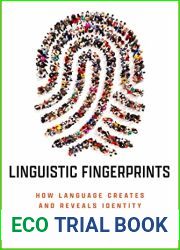


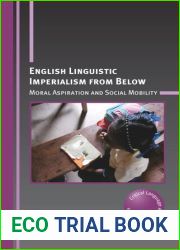
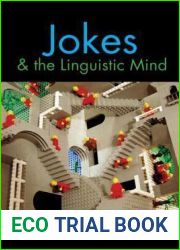


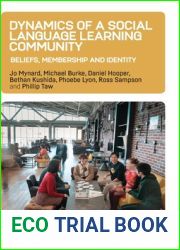


![The Acquisition of Intensifiers: Emphatic Reflexives in English and German Child Language (Studies on Language Acquisition [SOLA], 22) The Acquisition of Intensifiers: Emphatic Reflexives in English and German Child Language (Studies on Language Acquisition [SOLA], 22)](https://myecobook.life/img/6/655610_oc.jpg)


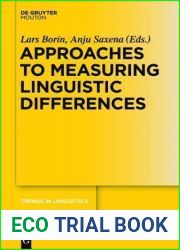

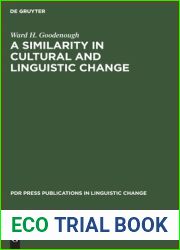
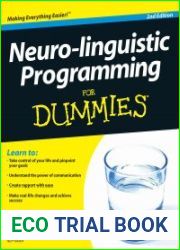



![Enhancing Autonomy in Language Education: A Case-Based Approach to Teacher and Learner Development (Studies in Second and Foreign Language Education [SSFLE], 9) Enhancing Autonomy in Language Education: A Case-Based Approach to Teacher and Learner Development (Studies in Second and Foreign Language Education [SSFLE], 9)](https://myecobook.life/img/6/659350_oc.jpg)
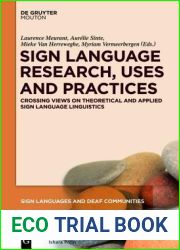
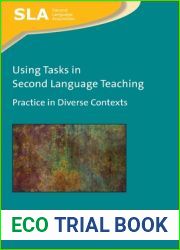

![Learning Indigenous Languages: Child Language Acquisition in Mesoamerica (Studies on Language Acquisition [Sola]) Learning Indigenous Languages: Child Language Acquisition in Mesoamerica (Studies on Language Acquisition [Sola])](https://myecobook.life/img/6/673265_oc.jpg)

![Acquisition of Word Order in Chinese as a Foreign Language (Studies on Language Acquisition [SOLA], 38) Acquisition of Word Order in Chinese as a Foreign Language (Studies on Language Acquisition [SOLA], 38)](https://myecobook.life/img/6/646390_oc.jpg)
![Language in the Context of Use: Discourse and Cognitive Approaches to Language (Cognitive Linguistics Research [CLR], 37) Language in the Context of Use: Discourse and Cognitive Approaches to Language (Cognitive Linguistics Research [CLR], 37)](https://myecobook.life/img/5/570387_oc.jpg)
![The Political Sociology of English Language: An African Perspective (Contributions to the Sociology of Language [CSL], 7) The Political Sociology of English Language: An African Perspective (Contributions to the Sociology of Language [CSL], 7)](https://myecobook.life/img/5/513916_oc.jpg)



![Media in Foreign Language Teaching and Learning (Studies in Second and Foreign Language Education [SSFLE], 5) Media in Foreign Language Teaching and Learning (Studies in Second and Foreign Language Education [SSFLE], 5)](https://myecobook.life/img/6/660750_oc.jpg)

![Language Acquisition and Contact in the Iberian Peninsula (Studies on Language Acquisition [SOLA] Book 57) Language Acquisition and Contact in the Iberian Peninsula (Studies on Language Acquisition [SOLA] Book 57)](https://myecobook.life/img/6/654140_oc.jpg)

